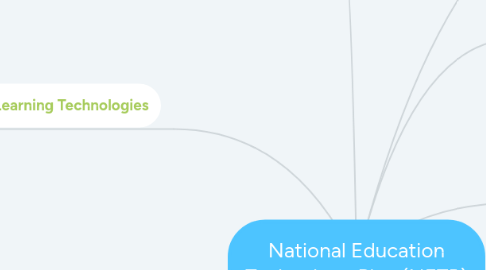
1. The Future of Learning Technologies
1.1. Augmented Reality as a new way to investigate our context and history
1.2. Increased use of games and simulations
1.2.1. Games and simulations increase student's interest in what they are learning as well as emerging them in lessons
1.3. New ways to connect virtual and physical interaction with technology
1.3.1. Again, this keeps students engaged and redefines learning entirely
1.4. Interactive 3D imaging software
1.4.1. Allows students to emerge fully in their learning and teaches students in a whole new way
2. Technology Enabled Learning
2.1. Technology can help organize learning around real-world challenges and project based learning
2.2. Technology can enable personalized learning or experiences that are more engaging and relevant
2.3. Technology can help learners pursue passions and personal interests
2.4. Technology can help learning move beyond the classroom and takes advantage of opportunites
2.5. Technology access can help close the digital divide and make trans-formative learning opportunities to all students
3. The NETP is...
3.1. A collection of recommendation and real-life examples
3.2. A vision for learning enabled through technology
3.3. A call for action
3.4. Written for: teachers, policymakers, administrators, etc
4. Providing Technology Accessibility for all Learners
4.1. Provide multiple means of representation so that students can approach information more than one way
4.1.1. Example; digital books, specialized software and websites, screen-readers, color contrast, etc
4.2. Provide multiple means of expression so all students can demonstrate and explain what they know
4.2.1. Examples; writing, online concept mapping, and speech-to-text programs
4.3. Provide multiple means of engagement to stimulate interest in and motivation for learning
4.3.1. Examples; different learning activities, providing opportunities for collaboration, etc
5. Learning; Engaging and Powerful Learning through Technology
5.1. Agency in Learning
5.1.1. Learners with agency intentionally make things happen through their actions
5.1.2. Letting students be creative and make meaningful choices increases their sense of agency and their belief that they will succeed
5.2. Personalized Learning
5.2.1. Technology can increase teacher's abilities to optimize learning for each individual student
5.2.2. Learning in which the pace of instruction are optimized for each individual student
5.3. Blended Learning
5.3.1. Learning occurs online and in person
5.3.2. Blended learning allows students to remain interested, as the class is always changing. It also allows students to gain knowledge from several different sources

